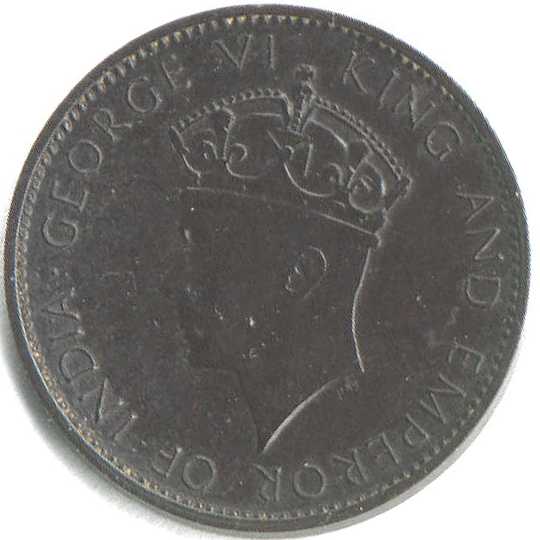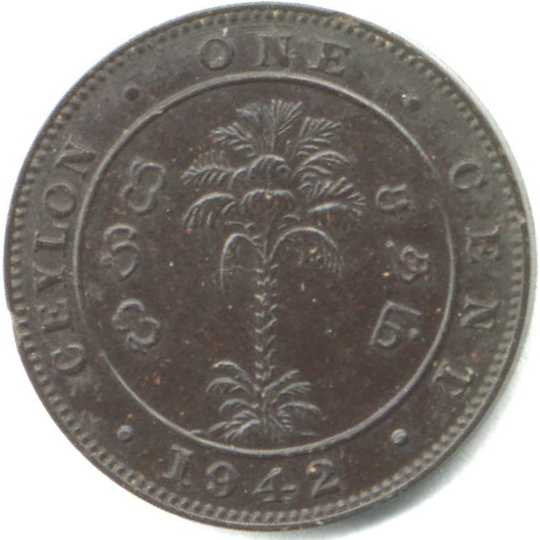| SPECIFICATIONS | |
| Denomination | 1 cents |
| Alloy | Bakelite |
| Diameter | 22.4 mm |
| Thickness | 1.8 mm |
| Weight | 0.81 gms |
| Shape | Round |
| Edge | Plain |
| Die-Axis | 0° |


George VI - One Cent Bakelite Pattern
|

| 
| |||||||||||||||||||
| Pridmore Unlisted | |||||||||||||||||||||
Obverse : Crowned effigy of George VI to left in high relief in the center of the legend GEORGE VI KING AND EMPEROR OF INDIA, along periphery. Initials of designer P M in relief below the truncation.
Reverse : A Talipot palm in the center, Left Sinhala satheyer; Right Tamil Satam. CEYLON . ONE . CENTS and year 1942 below along periphery.
Since they were not done by the Royal Mint are they a Fantasy. But since they were sent to Bank for evaluation does it make them true Patterns. ? This Pattern is not listed in Pridmore.
The Pattern was sold at Dick Ford collection Taisei-Baldwin-Gillio Auction #19 23 Feb 1995 lot 255, claiming to be the only specimen of the few known in private hands. Not True.
I understand from Graham Dyer it was manufactured by a Private Firm and sent to Ceylon for evaluation. This was not viewed kindly by the Royal Mint which took action against the Firm.
Retired officer T. M. U. Sallay of the Central Bank of Ceylon, confirmed that it is an Pattern sent to CBC. The Bakelite was not durable and he remembers one specimen which had broken.
This Lankan Bakelite Pattern is interestingly similer to the
1942 WWII - US patterns
including one in Bakelite.